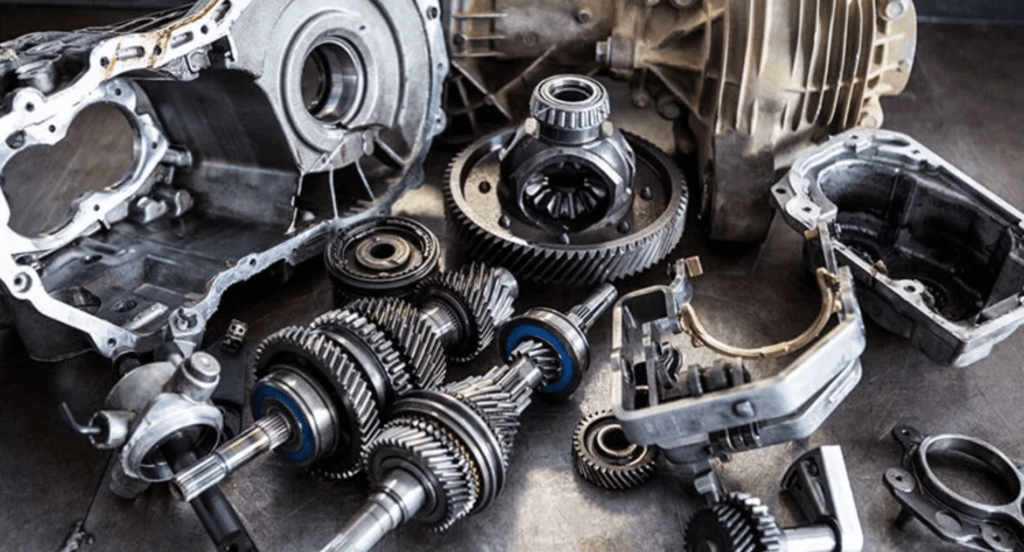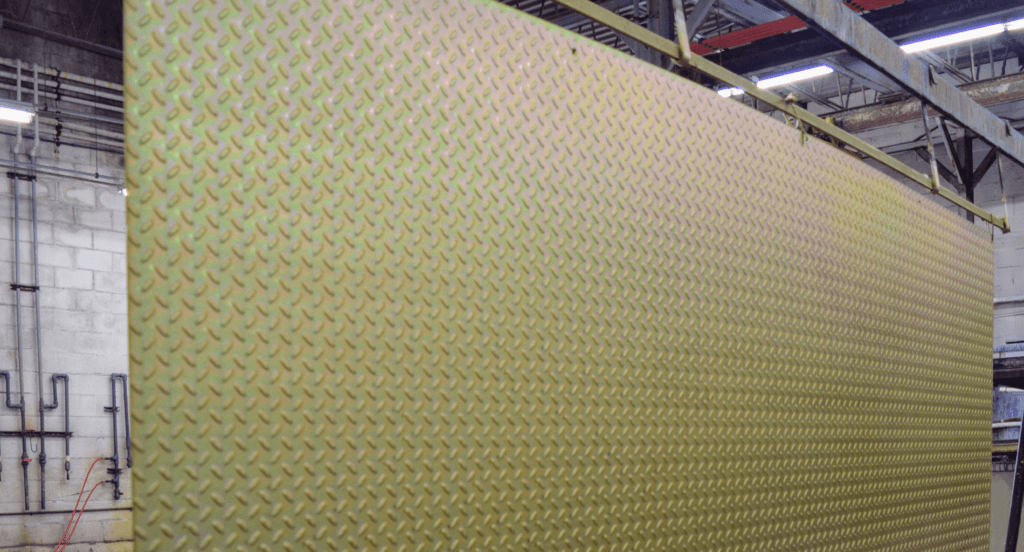Is the choice between nickel vs zinc plating important for metal fabrication processes? Indeed, this decision plays a pivotal role in the outcome of fabrication projects.
With extensive experience in metal fabrication, this article provides valuable insights for businesses in this field.
Nickel plating is durable and corrosion-resistant, ideal for high-end use, while zinc plating is cost-effective and suitable for general industrial needs.
In this article we will delves into the technicalities, benefits, and limitations of both plating methods, offering a comprehensive comparison.
Keep reading to find out the best plating choice for different metal needs.
1. Importance of Metal Plating
Metal plating is more than just a process; it’s key for making metal products strong and long-lasting. It adds a protective layer that keeps materials safe from rust and damage, making them last much longer. This method is really important in fields where keeping things working for a long time is crucial. Metal plating acts like a shield, protecting against age and environmental factors.
Reflecting on its importance, the global Metal Plating and Finishing market is on a notable rise. According to LinkedIn, the market was valued at USD Million in 2022 and is projected to reach USD Million in 2028, with a CAGR % during 2022-2028. This growth underscores the expanding need and reliance on metal plating across various sectors.
2. Understanding Nickel Plating
Nickel plating involves coating a surface, typically metal, with a thin layer of nickel to improve its durability, corrosion resistance, and appearance. This process not only enhances the functional attributes of the metal but also adds a visually appealing, shiny finish.
Features
- Corrosion Resistance: Nickel plating helps protect surfaces from rust and wear. It adds a barrier that can stop damage from water or air. This makes it an excellent choice for items exposed to harsh conditions. The added resilience to corrosion is particularly important for outdoor and marine applications.
- Surface Uniformity: The nickel layer is smooth and even. This helps make the surface look the same all over, which is good for parts that people can see. Uniform surfaces are also easier to clean and maintain. They provide a sleek and professional finish, enhancing the aesthetic value of the product.
- Enhanced Durability: The added nickel makes the surface stronger. This means it can last longer and work well for a long time. Durable surfaces are less likely to scratch or dent, preserving their appearance and function. This extra strength is crucial for high-use items like tools and hardware.
- Heat Tolerance: Nickel can handle high temperatures well. For example, this makes nickel-plated items good for places that get very hot, like engine parts. It also means they’re suitable for uses where they might be exposed to heat regularly, such as in automotive or industrial settings.
Applications
- Automotive Parts: Nickel plating is used on car parts to make them last longer and look nice. This plating also helps parts resist the wear and tear that comes from regular driving and exposure to the elements. In my experience, vehicles with nickel-plated parts often maintain their quality and appearance much better over time.
- Electronics: It’s also used in electronics. The nickel stops electrical parts from getting rusty, which is very important. This ensures that devices function reliably over time, maintaining consistent performance even under varying environmental conditions.
- Kitchenware: Nickel plating is used for things like forks and knives because it’s safe to touch food and it keeps things shiny. It also gives kitchenware a professional look that’s valued in culinary settings, adding to the overall appeal of the dining experience.
- Medical Devices: It’s good for medical tools because it’s clean and stops germs. Nickel plating also provides a hygienic barrier that is crucial in preventing contamination in medical environments, ensuring patient safety and equipment longevity.
3. Exploring Zinc Plating
Exploring zinc plating delves into the process of adding a zinc layer to metal surfaces for protection and durability, utilizing electrochemical methods to create a corrosion-resistant coating. This technique is widely used in various industries to enhance the lifespan and appearance of metal parts.
Features
- Corrosion Resistance: Zinc plating, often referred to as zemetal, provides a protective barrier, reducing the risk of rust and corrosion on metal surfaces. This extends the life of the metal by preventing degradation from environmental factors like moisture and salt.
- Enhanced Durability: The added zinc layer increases the strength of the base metal, making it more resistant to wear and tear. This durability is crucial for components in high-friction environments, ensuring longer service life. Moreover, it helps maintain the structural integrity of the metal under mechanical stress.
- Electrical Conductivity: Zinc plating can improve electrical conductivity, making it suitable for electrical components. This enhancement is vital in ensuring efficient power transfer in electrical circuits. The plating also provides a reliable surface for soldering, essential in electronic assembly.
- Aesthetic Appeal: Zinc plating can give a clean, bright finish to metals, enhancing their appearance. This visual improvement is not just for appeal but also helps in identifying wear and corrosion at an early stage. The finish can also be customized through various techniques, offering versatility in design.
Applications
- Automotive Industry: Zinc plating is used in car parts to protect against corrosion, enhancing their durability and lifespan. For example, this process is essential in areas like undercarriages and engine parts, where exposure to elements is frequent.

- Construction: Zinc plating is applied to metal components in buildings, offering extra strength and rust prevention. This is particularly important in structural supports and outdoor fixtures, where weather resistance is key. Additionally, it’s used on roofs and gutters to make them last longer and look better.

- Electronics: Zinc plating is applied in electronic components, improving conductivity and durability. It’s especially useful in connectors and switches, where consistent electrical performance is crucial.I’ve seen firsthand how zinc plating can significantly enhance the lifespan and reliability of these components.
- Consumer Goods: Used in everyday products like tools and appliances, zinc plating improves appearance and longevity. Items like kitchen utensils and garden tools benefit from this plating, making them more resistant to wear and corrosion.
4. Key Differences Between Nickel and Zinc Plating
Following the exploration of zinc plating, it’s important to understand how it compares to nickel plating. Here are the key differences, each highlighting their unique characteristics, benefits, and considerations:
| Aspect | Nickel Plating | Zinc Plating |
| Appearance | Offers a shiny, silver finish that adds an aesthetic appeal. | Typically provides a duller finish compared to nickel, but can be polished. |
| Corrosion Resistance | Superior in humid or marine environments; provides longer-lasting protection. | Good protection, especially when chromate treatments are applied. |
| Durability | Generally more durable, resistant to wear and tear. Ideal for high-use items. | Offers good durability, but may wear faster than nickel in harsh conditions. |
| Heat Resistance | Higher heat tolerance, suitable for components exposed to high temperatures. | Lower heat resistance, can weaken under extreme heat. |
| Cost | Typically more expensive due to the processing involved. | More cost-effective, a good choice for budget-conscious applications. |
| Application | Common in industries where a decorative finish is important, like automotive. | Widely used in construction and hardware due to its effective yet economical nature. |
| Environmental Impact | Can have a greater environmental impact during production. | Often seen as a more eco-friendly option due to less intensive production processes. |
5. 5 Tips for Choosing the Right Plating for Your Needs
After understanding the key differences between nickel and zinc plating, selecting the appropriate plating for specific requirements becomes vital. Here are the key tips for making the right plating choice:
#1 Assess the Operating Environment
Consider the environment where the plated item will be used. For harsh, corrosive environments, zinc plating might be more suitable, whereas nickel plating could be better for items requiring wear resistance and aesthetic appeal. It’s essential to understand the specific challenges like temperature, exposure to chemicals, or physical abrasion that the product might face. Think about where and how the product will be used.
#2 Determine the Functional Requirements
Identify the primary function of the plated part. If electrical conductivity is a priority, zinc plating is ideal. For parts needing a balance of durability and conductivity, such as in mechanical components or connectors, nickel plating is the way to go. It’s important to match the plating type to the functional demands of the application. The product’s performance depends greatly on the correct choice of plating.
#3 Consider Aesthetic Preferences
The appearance of the plated finish can be crucial, especially for consumer products. Nickel offers a shiny, refined look, while zinc provides a more subdued, matte finish. The choice also affects the perception of quality and branding, making it a critical aspect of product design. Zemetal products can leverage these finishes to enhance their market appeal and align with brand identity.
#4 Budget Considerations
Budget constraints play a significant role in the decision-making process. Zinc plating is generally more cost-effective and can be a practical choice for large-volume projects, offering a balance between cost and performance. Carefully consider the long-term benefits and maintenance costs associated with each plating type. Quality shouldn’t be compromised by budget limitations.
#5 Environmental Sustainability
Factor in the environmental impact of the plating process. Practices that are more environmentally friendly and sustainable can be crucial for businesses aiming to reduce their ecological footprint. Choosing a plating process that minimizes waste and uses less harmful chemicals can be beneficial for both the environment and company image. Choosing eco-friendly plating options reflects the commitment to sustainability.
Conclusion
This guide explores nickel and zinc plating, showing their impact on metal product performance and aesthetics. It helps businesses make informed choices that meet their needs and industry standards.
For businesses seeking expert plating solutions, Zemetal offers tailored services to meet unique requirements. Contact us for ideal plating solutions.
Dive Deeper Into Our Resources
For some insightful reads, we’ve curated a list of recommended articles just for you:
Still haven’t found what you’re looking for? Don’t hesitate to contact us. We’re available around the clock to assist you.








